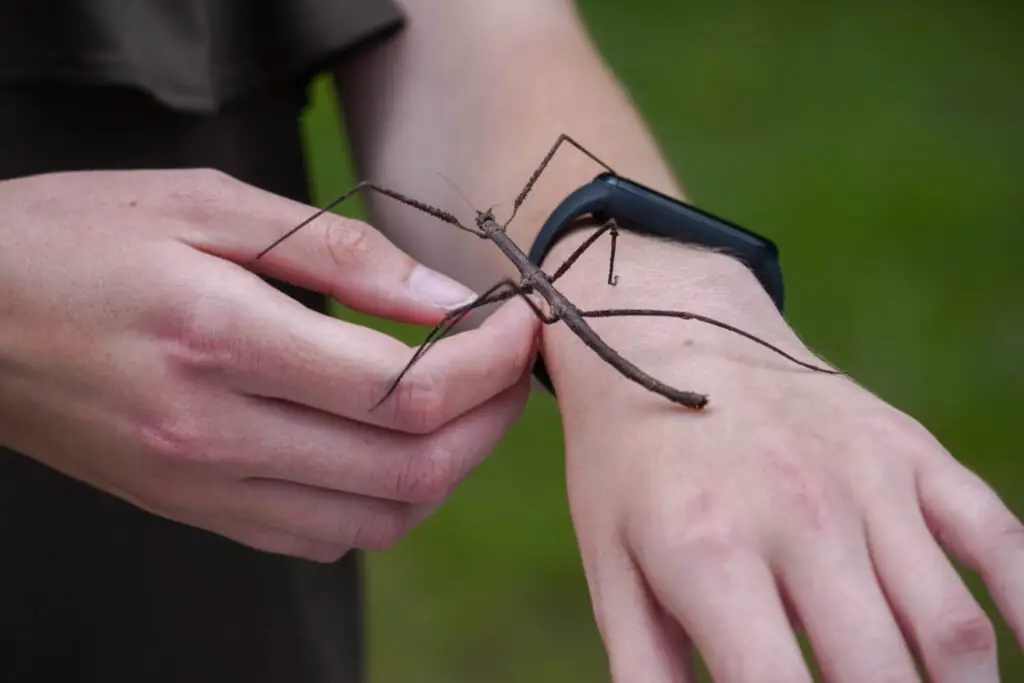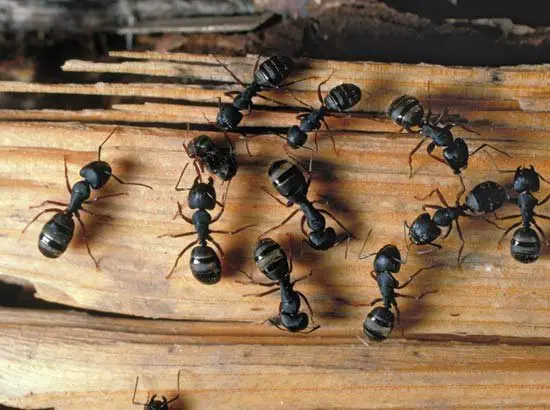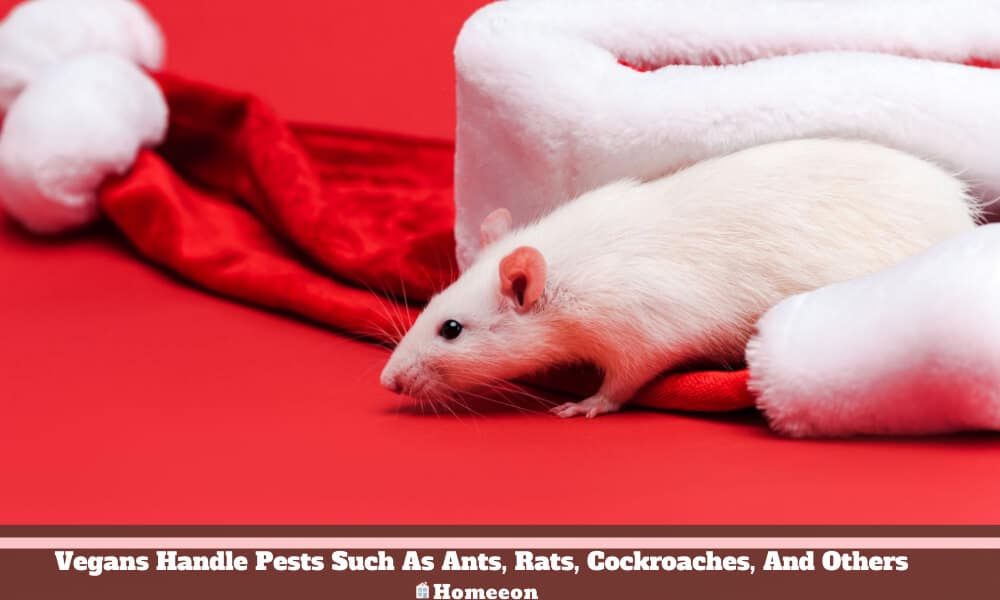Last Updated on August 2, 2023 By Emma W. Thomas
Vegans handle pests through humane and non-lethal methods. They use natural repellents, seal entry points, and keep a clean environment to deter pests. Traps that capture and release, along with essential oils, are preferred over harmful pesticides.
Which Animals Are Classified as Pests?
There are several creatures that humans often find disruptive or damaging in their homes, gardens, or around their properties. This listicle explores which animals typically fall into the category of pests.
1. Rodents: Rats and Mice
Rats and mice are commonly viewed as pests due to their destructive nature. They often burrow into walls, attics, and food storage areas, causing significant structural damage. Moreover, they carry diseases which can be detrimental to human health.
2. Insects: Cockroaches, Ants, and Termites
Insects such as cockroaches, ants and termites also classify as pests. They multiply rapidly, invade homes, and can cause substantial damage. Termites, in particular, are notorious for their destructive tendencies toward wooden structures.
3. Birds: Pigeons and Sparrows
Although birds are often admired for their beauty, certain species like pigeons and sparrows can be intrusive, causing messes and noise disturbances. They can nest on building ledges, roofs, and gutters and can transmit diseases through their droppings.
4. Squirrels
While squirrels are often seen as friendly woodland creatures, they can be quite destructive in certain circumstances. These creatures can damage gardens, chew through home infrastructure and stored food, and can cause power outages by gnawing on electrical cables.
5. Bats
Bats are considered pests when they inhabit human structures and leave their droppings, also known as guano, which can lead to substantial sanitation issues and structural damage. Bats also carry diseases, with rabies being the most notable one.
6. Raccoons
Raccoons are known to invade properties, particularly in urban areas. They scavenge for food, often spreading garbage in the process, and can cause extensive property damage. They are also carriers of rabies and other diseases.
7. Wasps and Bees
While bees play a crucial role in pollination, both bees and wasps become pests when their nests are constructed close to human habitats. Their stings can be painful, and they can be especially dangerous for individuals with allergies.
Vegan-Friendly Methods Of Pest Control

The methods of pest control by vegans differ from one individual to another. You can use many techniques to control pests, some of which can be cruel and torturous. But, there are a few methods that a vegan may use to minimize or avoid harming these animals that include:
Reduce The Chances Of Pest Entry
One of the best options for vegans to control pests is preventing or reducing the chances for these creatures to get into your home. Preventing rodents from accessing your home is easier than getting rid of them once already in. Mice are not only capable of gnawing through several materials, but they also squeeze themselves into tiny gaps.
To prevent mice and other tiny organisms from invading your home, try using a metal wire mesh instead of plastic mesh to cover holes.
Capture And Release
While several traps are used for the capture and release of mice and other rodents, it is necessary to look for those that do not inflict pain on the pests. Although more preferable to traps that maim or kill an animal, this method could cause stress to the pest. The animal could also be subjected to an unfamiliar environment with no food and predators, which could be viewed as cruelty.
If you have a problem with mice, this technique could be preferable since you will catch the rodents without inflicting any physical harm on them. You will then release them into a natural habitat that is more friendly to them. You will, however, need to monitor the traps regularly to prevent leaving the mice on them for so long once they are caught. Doing this will satisfy the ethical stand of most vegans.
Natural Deterrents And Repellants
Besides minimizing the chances of pests invading your home, you can also use the various natural repellants available in the market. For example, you can lay copper tape to form a barrier around your fruits, vegetables, and other plants. You may also place garlic, chilies, coffee, and other strong-smelling substances to deter garden pests.
There are also several electromagnetic and ultrasonic repellants that you can use to deter unwanted guests. These repellants are known to work without causing any real harm to the pests and are, therefore, vegan-friendly.
Block Any Access To Food
Most pests and animals invade your homes in search of food and water. For example, ants look for crumbs from work surfaces and floors, while mice will look for food in the kitchen, cupboards, and other common places where they may find cereals and grains improperly stored.
To keep away these animals and pests, ensure that you clean the floors and surfaces frequently. Doing this removes the crumbs and scraps that attract the pests. Ensure you store your food in airtight containers as this can help to keep off rodents. Be sure to store your blankets, winter clothes, and other things that attract moths in sealed boxes and bags.
Live With The Pests
Besides the various techniques mentioned above, you can decide to let the pests live in the home. While this method may not be appropriate, it can be the most effective and ethically safe. For example, since wasps are less aggressive if not provoked, you can leave them undisturbed until their time of stay is over. Wasps are active during the summer months only, and they will leave their nests towards the end of this period. These creatures do not return to their nests in subsequent years and are thus, not harmful having them around.
Different Pests And Their Vegan-Friendly Solutions
| Pests | Reasons for elimination | Possible remedy |
| Mice and rats | Could spread diseases in the home and gnaw through water & gas pipes, and electrical wires. | Use herbal flea remedies. Plant flea-repelling plants such as pennyroyal, spearmint, and lavender. Clean all clothes that are in contact with flea-infested animals. Ensure that your pets get preventive medicines to keep worms, fleas, and ticks away |
| Roaches | It May also cause infections and contaminate food. | Keep the environment extremely clean. Clean tables, surfaces, floors, and cupboards and clear up any liquid spills. Empty and clean bins regularly with environmentally-friendly detergents. |
| Fleas | Not common spreaders of diseases, but they are quite a nuisance to humans and animals. | Clean your beddings regularly, vacuum your furniture and mattresses, and declutter your bedrooms to minimize hiding places. |
| Bedbugs | While they may not spread diseases, their bites are irritating to humans. | Clean your beddings regularly, vacuum your furniture and mattresses and declutter your bedrooms to minimize hiding places. |
| Ants | They are a nuisance, especially when in contact with food. | Minimize their access to food sources. |
| Moths | They can feed on carpets, rugs, clothes, fur, hairs, and other materials in the home. | Place natural moth repellants in your closets, wardrobes, and put the clothes, not in use, such as blankets, in airtight boxes. |
| Flies | They may not pose any serious problems but are a nuisance anyway | Keep the surfaces clean and empty bins regularly. You can also have some strong smelling plants to deter them, such as mint, basil, pennyroyal, and more. |
| Woodworms | They pose a threat to houses built of wood beams. They may compromise the integrity of the beams upon which the structure draws its strength. | Use natural woodwork treatments. Ensure you look out for woodworms when buying used furniture to avoid taking them into your home. |
Conventional Pest Control Methods That May Not Be Vegan-Friendly

Several methods can be used to eliminate or control pests and which may not be vegan-friendly. These techniques are normally designed to kill animals and may, therefore, not be humane. They include;
Glue Traps
These traps though effective, are perceived as distressing to animals since they cause the pest’s feet to stick to the surface. The animal becomes immobile, and if left there for long, it may starve to death. Most people also discard the trap with the animal still alive.
Spring Traps
Spring straps come in different shapes, designs, and sizes and are mostly meant for use with rodents. These traps are designed to kill these animals once they are set off through the effect of the trap’s arm. While the rodent may not die on impact, it will stay in agony for as long as you don’t check the trap.
Electric Trap
This trap is normally connected to an electricity source and activated by an animal. When the animal in question steps on the trap, it triggers it, and in the process, it gets killed.
Jaw Trap
This tool is similar to a spring trap in that it kills the pest quickly. These traps have teeth on the jaws, and the upper jaw springs down on any animal that sets it off.
Poison Bait
Most people prefer poison bait to control animals such as slugs, rats, mice, roaches, and ants. It is important to be careful since most of them could be harmful to your health if you come into contact with them. The animals also undergo a lot of suffering since they will die painfully and slowly.
Biological Methods
The biological pest control technique is less cruel to animals since it is similar to natural methods. This method involves introducing a natural parasite or predator to attack the pest. For example, introducing nematode worms in a garden to kill chafer beetles. This process is environmental-friendly and preferable to spraying your garden with harmful chemicals that could affect other animals.
Shooting
Larger animals can be shot at using rifles or other firearms. This method, however, applies in selected areas that allow it, and there are regulations concerning it. The technique is not only painful to the target animal, but it may also endanger other untargeted animals.
You need to be careful when applying such techniques to avoid hurting children and adults. The rifles may also release some poisonous and harmful chemicals.
Fumigation
This technique involves the use of insecticides that are in the form of mist or liquid. The method is administered in an airtight environment that is created around the pest-affected area. It is suitable for insects, but you need to be careful not to contact the chemicals.
It would be best if you also were careful not to hurt untargeted animals with the chemicals.
When Is a Pest Just a Mild Nuisance?
When discussing home and garden pests, it is often misunderstood that not all pests are a serious risk. Some pests may cause minor discomfort and be seen as a nuisance rather than a problem that warrants immediate attention. However, it is essential to identify when a pest becomes just a harmless nuisance to avoid unnecessary stress and costs in dealing with them.
- Harmless Spiders:
Most spider species are harmless pests that could be considered a mild nuisance. Spiders such as Cellar spiders and Wolf spiders, although might seem daunting to some, pose little to no threat to humans or household infrastructure.
- Fruit Flies:
Fruit flies typically make their appearance near ripe fruit, deteriorated food, or fermenting products. While the swarming of fruit flies can be irritating, they do not pose a serious threat to the household health or infrastructure.
- Ladybugs:
Ladybugs are generally not a pest to worry about in the garden or even in the home. They don’t bite, sting, or transmit diseases, making them a harmless nuisance.
- Silverfish:
Silverfish are small, wingless insects found in households. They typically do not pose any health risks; however, they can cause minor damage to books, clothes, and other starchy materials.
- Boxelder Bugs:
These bugs generally make their way into homes to escape cold weather. While boxelder bugs might be a mild nuisance due to their smell and the fact they may stain curtains, walls, and fabrics with their excrement, they do not pose a significant health or safety threat.
- Earwigs:
Although they might look threatening with their pincers, earwigs are harmless to humans. Their primary food sources are decaying plant material and small insects. An infestation can become a nuisance, but they pose no immediate danger.
- Sowbugs/Pillbugs:
Common in garden areas, these bugs are harmless to humans and pets and provide beneficial services like decomposition. However, their presence in large numbers can be discomforting.
- Stink Bugs:
These harmless bugs get their name from the pungent odor they release when threatened or squished. While this smell can be overwhelming, stink bugs pose no direct risk to human health or property.
Conclusion
Veganism advocates for a life that is cruel-free and caring to animals. It is, therefore, sometimes confusing how to deal with creatures such as ants, wasps, or mice, when they invade the home without harming them.
Some less cruel techniques include preventing access, keeping the environment clean, or catching and releasing the creatures. The choice depends on an individual’s belief as well as which organisms are classified as pests.
References:
https://www.veganfriendly.org.uk/articles/vegan-pest-control/
https://theminimalistvegan.com/do-vegans-kill-bugs/
Emma is a graduate of Domestic Science or Family and Consumer Sciences (Home Economics) from the University of Wisconsin. She has 7 years of experience Working with the strategic section of BestBuy and now writing full-time for Homeeon.
From Managing the Home, Interiors, Cleaning, and Exteriors to Gardening and everything about Making A Home Liveable – is her passion and this Homeeon is the result of this.
Emma loves decorating her home with the best stuff found online. She cares about quality over anything and writes reviews about them here in Homeeon. Get in touch with her over Pinterest.
Keep reading her blogs.

